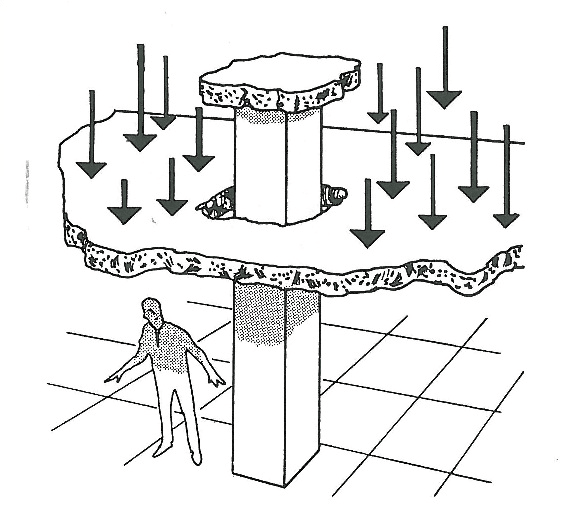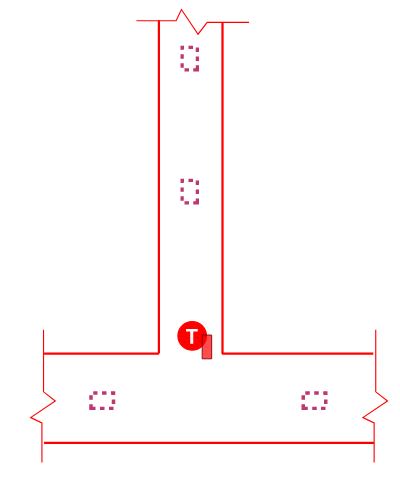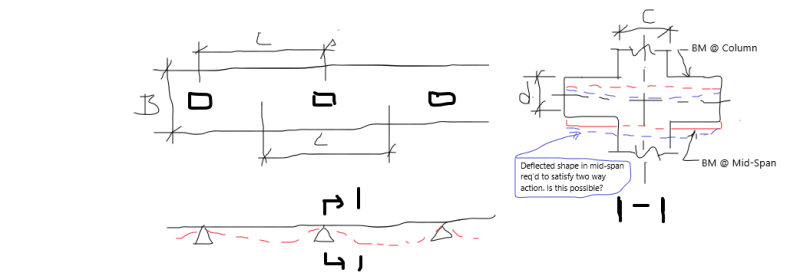Navigation
Install the app
How to install the app on iOS
Follow along with the video below to see how to install our site as a web app on your home screen.
Note: This feature may not be available in some browsers.
More options
Style variation
-
Congratulations TugboatEng on being selected by the Eng-Tips community for having the most helpful posts in the forums last week. Way to Go!
You are using an out of date browser. It may not display this or other websites correctly.
You should upgrade or use an alternative browser.
You should upgrade or use an alternative browser.
Punching Shear in Transfer Beams
- Thread starter efFeb
- Start date
- Status
- Not open for further replies.
rowingengineer
Structural
Why the band beam? Are you thinking in a similar for torsion the the slab on each side of the beam will act as a solid plate causing tension stiffening that allows for better shear/torsion results to also apply would also be applicable to punching shear.
"Programming today is a race between software engineers striving to build bigger and better idiot-proof programs, and the Universe trying to produce bigger and better idiots. So far, the Universe is winning."
"Programming today is a race between software engineers striving to build bigger and better idiot-proof programs, and the Universe trying to produce bigger and better idiots. So far, the Universe is winning."
Punching shear is a phenomenon in flat slabs caused by concentrated support reactions inducing a cone shaped perforation starting from the top surface of the slab. Although generally preceded by flexural failure, punching shear is a brittle failure mode and the risk of progressive collapse requires a higher safety class in structural design.
One way shear is rate of change of bending moment. It's typically called beam shear. However two way shear is punching shear and its effect is two way. It's also called flat slab shear.

- Thread starter
- #8
Thanks for your responses; I've attached a sketch to show a particular condition i'm worried about.
The location of the column transfer means that there is definitely enough room for the punching perimeter to form. This leaves me with a few questions, sorry if some of these are obvious answers:
1. I'm also going to need hanger stirrups at the beam intersection; is this in addition to any required punching shear reinforcing? Does anyone have detailing suggestions for this?
2. I have a thin slab outside of the transfer beams, but is there any reason I would need to treat this as an edge condition?
3. If I do need stirrups for punching shear reinforcing, i cant extend this 2d from the face on all sides, as I run off the beam. Does this mean I must widen the beam, or as i mentioned above, does this create an edge condition.
Thanks very much for your help!

The location of the column transfer means that there is definitely enough room for the punching perimeter to form. This leaves me with a few questions, sorry if some of these are obvious answers:
1. I'm also going to need hanger stirrups at the beam intersection; is this in addition to any required punching shear reinforcing? Does anyone have detailing suggestions for this?
2. I have a thin slab outside of the transfer beams, but is there any reason I would need to treat this as an edge condition?
3. If I do need stirrups for punching shear reinforcing, i cant extend this 2d from the face on all sides, as I run off the beam. Does this mean I must widen the beam, or as i mentioned above, does this create an edge condition.
Thanks very much for your help!

I hope the sketch below can help you to realize the difference between one way and two way actions from deflection point of view.

I don't quite follow your question. Can you provide a cross section on each beam, and show where is the slab of your concern?

I don't quite follow your question. Can you provide a cross section on each beam, and show where is the slab of your concern?
I take the same approach Rapt noted if a full punch perimeter can form within the width of the beam the look at a true punching check. If the punch perimeter would fall outside of the beam then fall back to traditional one-way beam shear and beam stirrup design.
I usually take a conservative approach and the hanger bars should be designed to transfer the full column reaction + any tributary floor load into the supporting girder.
My Personal Open Source Structural Applications:
Open Source Structural GitHub Group:
I usually take a conservative approach and the hanger bars should be designed to transfer the full column reaction + any tributary floor load into the supporting girder.
My Personal Open Source Structural Applications:
Open Source Structural GitHub Group:
- Status
- Not open for further replies.
Similar threads
- Replies
- 4
- Views
- 13K
- Question
- Replies
- 0
- Views
- 6K
- Locked
- Question
- Replies
- 12
- Views
- 4K
- Replies
- 13
- Views
- 7K
- Replies
- 7
- Views
- 2K
